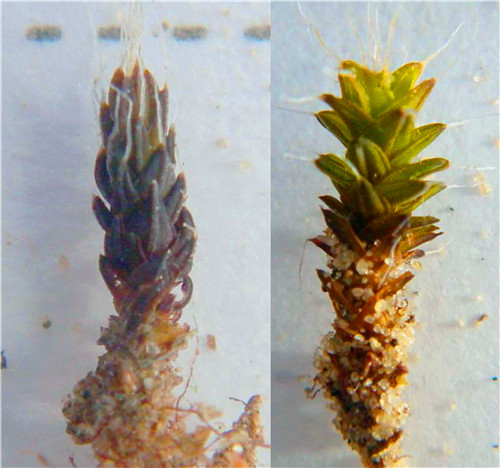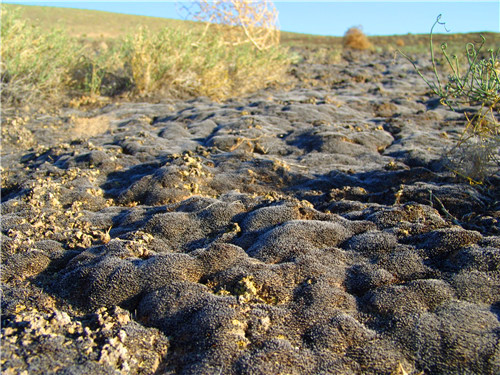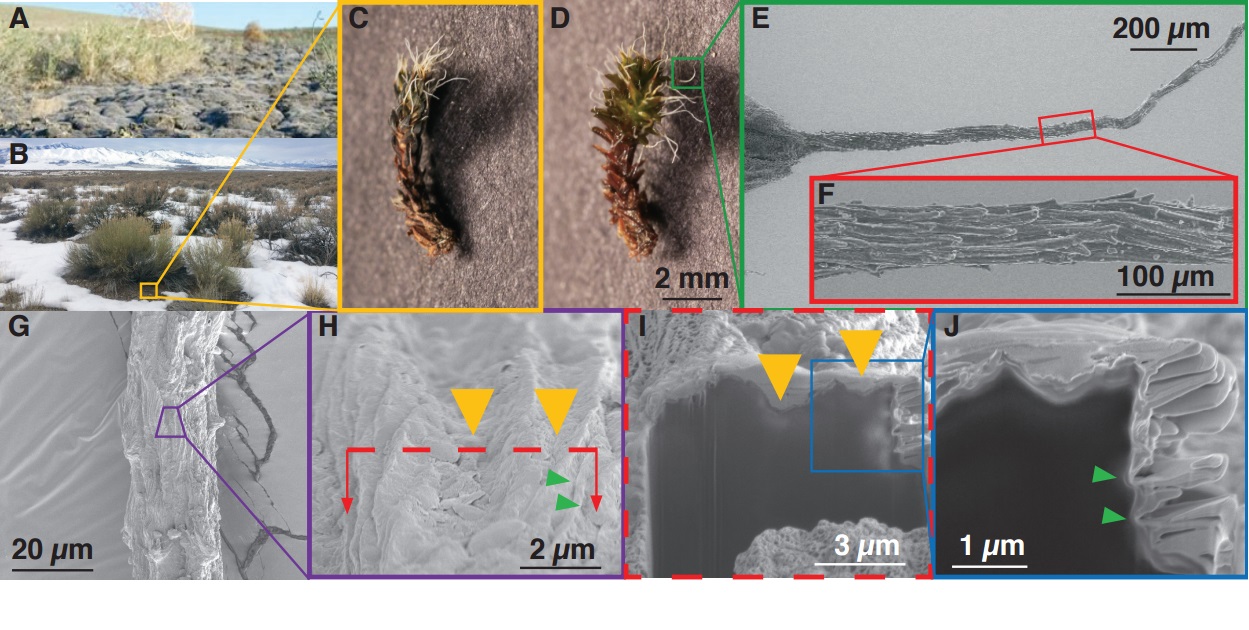| Research |
|
||||
|
||||
|
||||
|
||||
 |
| Location: Home > Research > Research Progress |
| TEXT SIZE: A A A |
different appearance of dry and wet moss shoots(Image by XIEG)
moss crusts in Gurbantunggut Dersert (Image by XIEG)
Morphology of S. caninervis and the associated awns. a,b, Biological soil crusts formed by S. caninervis in the Gurbantünggüt Desert, China (a) and the Great Basin, USA (b). c, Photograph of a dry moss shoot. d, Photograph of a rehydrated moss shoot. e–g, SEM photographs of the surface of a moss awn, including highly magnified views. h, A tilted high-magnification photograph of a surface moss awn, where micro- and nanogrooves are marked by yellow and green triangles, respectively. i, Local cross-section of the moss awn from a cutting plane marked by a red dashed line in h. j, Magnified view of the area enclosed by the blue box in i. (Image by XIEG)
Almost nothing in the world is a better survivor in the desert than moss. It was one of the first living things out of the relatively safe and comfortable oceans to the barren and exposed earth planet millions of years ago.
But how? How does this species manage to survive with so little water, especially in the vast and bleak desert where moisture is hardly available? This has been a mystery that puzzled scientists for ages.
But now we may find the answer for this, thanks to the effort of a group of international scientists from China and the United States. The scientists took Syntrichia caninervis as their research subject and finally uncover the secret of desert moss’ water collection and transportation system.
After studying the plant for four years, researchers from Xinjiang Institute of Ecology and Geography, Chinese Academy of Sciences, Utah State University, and Brigham Young University discovered that Syntrichia caninervis uses highly specialized leaves, instead of its roots, to collect water from dew, fog, snow and rain with incredible efficiency.
“For the first time, scientists have examined in detail how this moss (Syntrichia caninervis) pulls water right from the air using its awns. These tricks may one day help engineers design better equipment to collect water in arid locales,” reviewed the Science Magazine in their newly publication.
Syntrichia caninervis, is a tiny, delicate desert moss whose leaves are capped with spindly white hairs called "awns." These plants have a water collection system so effective it can suck water vapor straight from the air, rather than absorbing it from the ground via roots.
When the air is misty, foggy or even humid, trapped dewdrops move up grooves in the moss leaves by capillary action. The tiny drops form a bigger drop to be absorbed and stored by the plant. When it rains, moss awns will help reduce splash and capture raindrops by the same mechanism.
“Using these different structures, this plant might get a drink every day, where other desert vegetation gets water maybe once a week,” said Tad T. Truscott, leading researcher of this study.
The findings were published in the journal Nature Plants on Jun. 6. For more details, please refer to http://www.nature.com/articles/nplants201676.
Contact: ZHANG Yuanming E-mail: zhym@ms.xjb.ac.cn Key Laboratory of Biogeography and Bioresource in Arid Land, Chinese Academy of Sciences |


